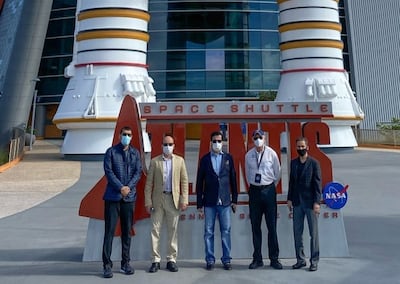Dewasat-1, the nanosatellite launched by Dubai Electricity and Water Authority, has sent its first signals from space.
The satellite flew into orbit on a SpaceX rocket on Thursday and has reached a low orbit of between 525 and 530 kilometres above Earth.
Moving at a speed of around 7.5km per second, the satellite needs only 90 minutes to orbit the globe.

The Dubai nanosatellite aims to improve the emirate’s utility network.
“Through the Space-D programme, we intend nanosatellite technology to complement the terrestrial IoT communication network to increase the efficiency and effectiveness of Dewa’s operations and support the digitisation of our electricity and water networks," said Saeed Mohammed Al Tayer, chief executive of Dewa.
"This will increase the efficiency and effectiveness of our planning, operations and preventive maintenance for our production, transmission and distribution divisions, as well as our smart grids and electric vehicle charging stations."

By the end of 2022, there are plans to launch a 6U nanosatellite with customised high-resolution image-sensing technology to be specifically designed for Dewa to communicate with its terminals.
"The project includes applications to collect and analyse data multi-spectrum, high-resolution thermal imaging devices such as those used on board spacecraft. They are specifically designed for use in electricity and water networks, and will be deployed to detect thermal fingerprints in high voltage transmission lines, substations, buildings and solar power stations," he said.
The utility company announced its Space-D programme last year. It is an effort to improve operations, maintenance and the planning of its networks by using nanosatellite technology.
This involves launching a nanosat constellation that will support Dewa’s primary satellite.
Utility companies can benefit from satellite technology. It allows them to monitor and map their infrastructure, as well as track the environmental effect of their operations. The data can also help these companies improve their services.
Dewasat-1, an imaging satellite, will be able to better monitor high-voltage transmission lines, substations, buildings and solar power stations.
Dewa also expects that the satellite will enhance the performance and efficiency of the photovoltaic solar panels at the Mohammed bin Rashid Al Maktoum Solar Park, the world’s largest single-site solar park.
Dewasat-1 is the first among many other satellites Dewa plans to launch.





